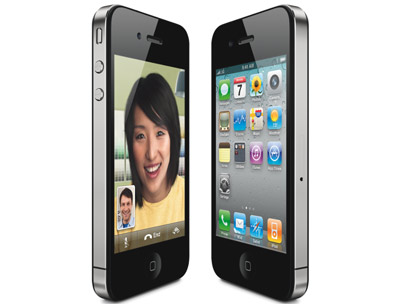For many Australian retailers, multi-channel retailing means having a website, perhaps a catalogue, and a bricks and mortar store.
But for the progressive retailers of the US and Europe, multi-channel retailing is a lot more complex. And when Australia’s online retailing market catches up with that of the northern hemisphere, the same complexity will apply here.
By January next year – that’s just six months away – one in two Americans will have a smartphone. Never mind gender, race or socioeconomic demographic, smartphones like Apple’s iPhone and rivals running Google’s Android system will be as commonplace as a flat screen TV or a PC is now.
Nick Jones, executive VP of ARC Worldwide, a division of Leo Burnett, told Westfield World Retail Study Tour delegates that every phone sold in the US today, excepting low cost pre-pay handsets, are smartphones. And their owners are using them for functions never imagined just a decade ago when the world was trying to get its head around text messaging.
Never mind the social networking which allows people to tell their friends they’re at Zara or become mayor of the local Gap on Foursquare. Never mind the digital shoplifting that shocked participants in last year’s study tour – where you stand in a shop, scan a product’s bar code and buy it instantly at a cheaper price from an internet retailer and leave the store wallet intact.
Tomorrow’s smartphone owner will be using their handset to pay for purchases, compare prices or instantly share an image of the clothes they’re trying on at Zara before deciding whether to buy. Or they will use an app called Shopkick to earn points (discounts) simply by being encouraged (by proximity-generated SMS) to enter a store and browse products.
And one of the greatest revelations this year is that shoppers are using their smartphones not to search, but to browse. “Because they can,” explains Jones, who led a comprehensive research project into the use of smartphones by US consumers. “The phone is quickly becoming America’s most important shopping partner.”
And it is no fad. “Eighty-eight per cent of marketers say they’ll be spending more and doing more in the mobile sense in 2011,” said Jones. One in four of the same people say they have ‘extremely’ or ‘very successful’ experience.”
Jones says one in five Fortune 500 companies have a mobile-optimised website. Yet fewer than one in 20 retailers have created a mobile specific website.
“If you do nothing else, optimise your website for mobile use,” urges Jones, who says there is a real disparity between intent and execution. “People are stuck, really wanting to do it, but not sure how to make it happen.”
Jones’ position is largely based on the results of a study of 1800 US smartphone users in September 2010, followed by a qualitative study of a group of ‘heavy’ mobile shoppers and high ‘potential’ mobile shoppers two months later, where the research team looked at category drivers, frustrations and motivations in the arena.
In the research, one group of consumers was asked to buy everything on their mobile for the day. The intention was to draw out the challenges they faced – and their frustrations. They were asked to try five shopping ‘apps’. A second group was tasked with shopping for a big ticket item – something with a high price point in a high interest category.
Three key findings resulted from the study – red flags for any Australian retailer: Firstly, half of all smartphone owners are mobile shoppers. One in 10 are what Jones would describe as ‘heavy mobile shoppers’, with 39.1 per cent light mobile shoppers. The balance fitted somewhere in the middle. “We found a very small group doing the vast majority of shopping. The gap between heavy and light is enormous.” But ‘light shoppers’ are still into their mobiles. They’re looking up store trading hours, locations and other information.
About half the ‘light’ shoppers – generally more female than male in an age range of 25 to 44, with 60 per cent earning under $75,000 a year – are still using their mobile phones to purchase up to once a month. But more than half the ‘heavy’ users are shopping with their mobiles once a week or more.
“Heavy mobile shoppers are more into novelty and experimentation,” says Jones. That group is somewhat skewed towards males at the younger end of the study’s age range of 18 to 64 and has an above average income and predominantly use iPhones. (The technology stands in the way if they’re not iPhone users, says Jones).
“The real growth will be in attracting light users to increase their use,” explains Jones’ research colleague, Molly Garris.
Secondly – and this is potentially the scariest part for retailers – many smartphone owners are being held back only by not knowing how much their phones can do. On one hand this gives early retail adopters of the technology an advantage should they successfully communicate the facilities available online ‘onphone’. On the other, this means those retailers who aren’t working on a mobile shopping solution could quickly be left behind as understanding and uptake of mobile solutions grows, advocates Garris.
Many consumers who own smartphones don’t know if the retailer’s website is mobile-enabled, or they’re not aware of apps like Shopkick. In fact, Shopkick is now starting to develop its proximity-prompted ‘push’ technology to work not just outside a store and encourage shoppers to venture in, but inside the store, driving visits to an aisle or shelf.
Surprisingly, the iTunes store boasts 350,000 apps available to iPhone owners – a huge proportion of them free. But there is as yet no category on the store for shopping applications.
“We need to start reframing the perception of the mobile for shopping,” says Garris. Retailers with phone-smart websites should hang enlarged cutouts of iPhones in their store windows boasting the feature she advocates to encourage sales by phone.
The third lesson from ARC Worldwide’s study is that consumers are (currently) more likely to shop some categories with mobile phones than others.
Categories like FMCG where coupons are offered on specific products are the most popular, along with others offering loyalty cards or rewards for regular custom. Kraft, for example, has developed an app where the consumer types in the ingredients they wants to use – like chicken and peas – and the app will suggest recipes, then list the ingredients (obviously promoting any that Kraft produces) in the form of a shopping list which sits on the mobile until you reach the retailer.
But Garris cautions that an app developed for a high involvement category (think vehicles, electronics) must be quite different from one developed for lower involvement categories like FMCG products.
“With higher involvement categories, the mobile has to add value by allowing interaction in store, such as access to product reviews. With lower involvement categories, it is more useful for the retailer to focus on coupons or instant promotions. Price comparisons won’t get people to go to another store to save 25 cents.”
The world is changing – and fast. Garris and Jones say consumers are now using their smart phones as an extension to their computer. A consumer might look for directions to their nearest Westfield on their home computer. Once they get to the centre, Westfield has an app to help find a parking space closest to the store they’re heading for.
The ARC Worldwide research is undoubtedly one of the most comprehensive studies into consumer smartphone shopping behaviour yet undertaken. But in a video of interviews of study participants screened before the Westfield World Retail Study Tour group at a presentation in Chicago, one comment stood out starkly: “ I’m thoroughly unimpressed with apps that make me do a tonne. They need to make it easy for me to spend my money.”






